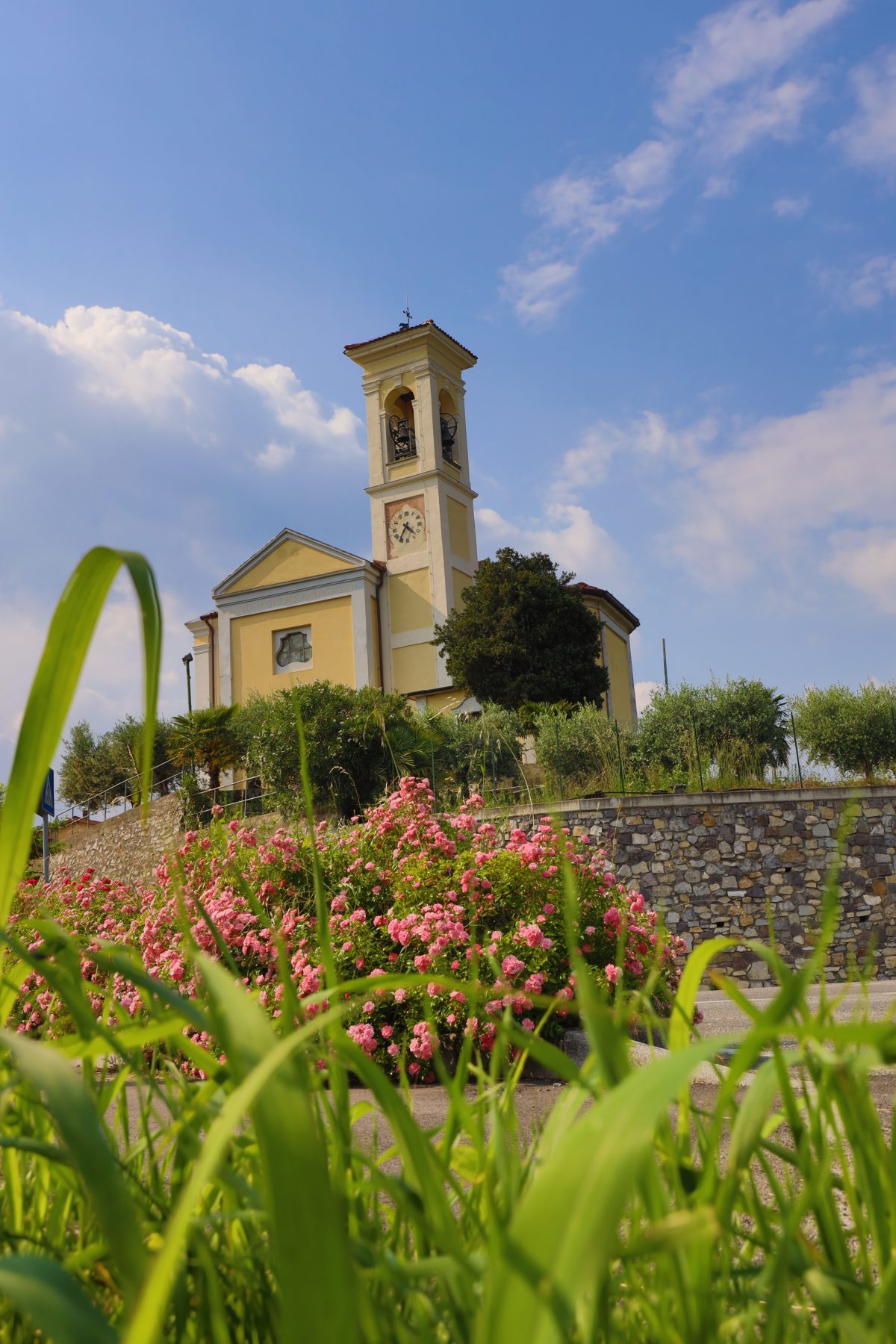
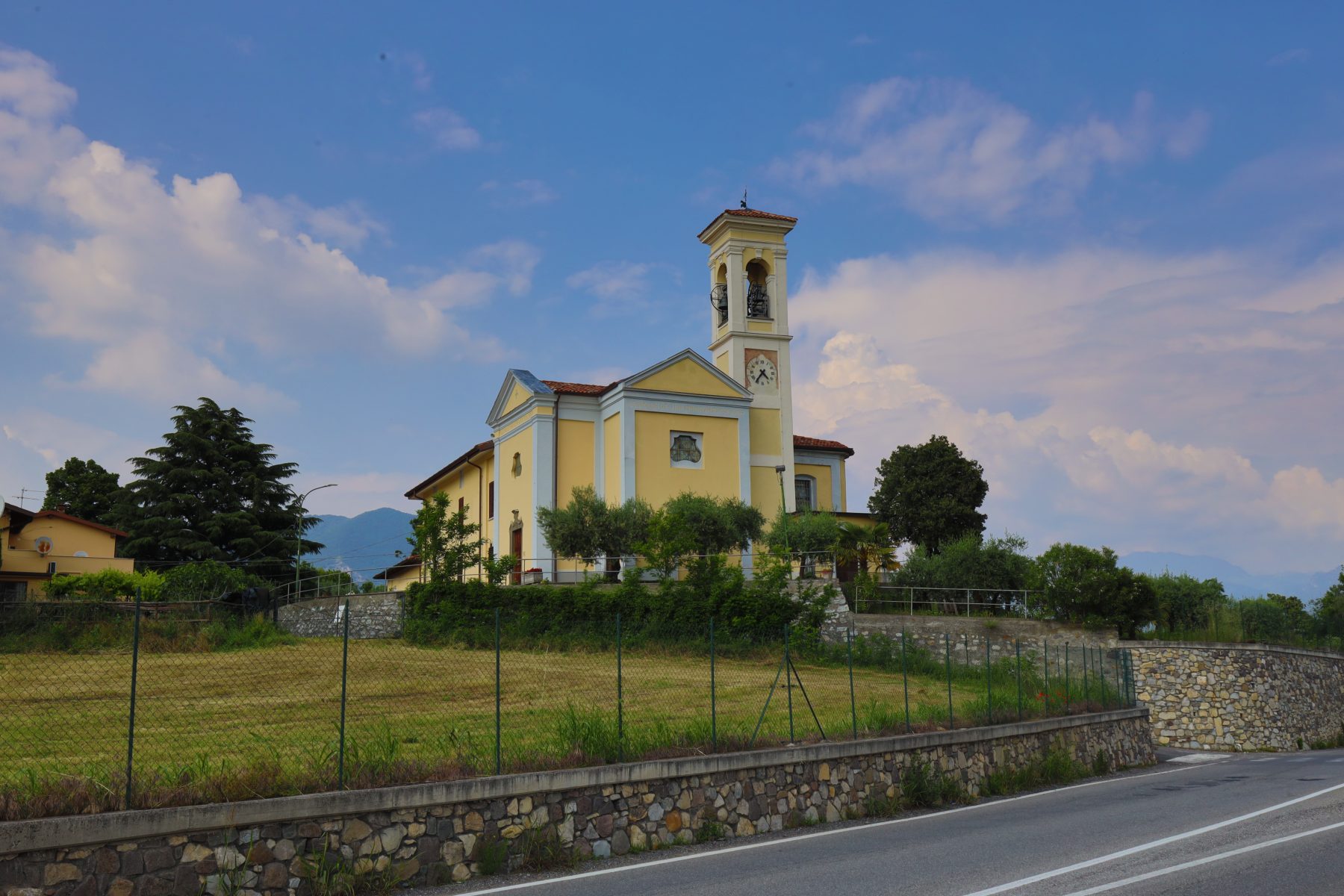
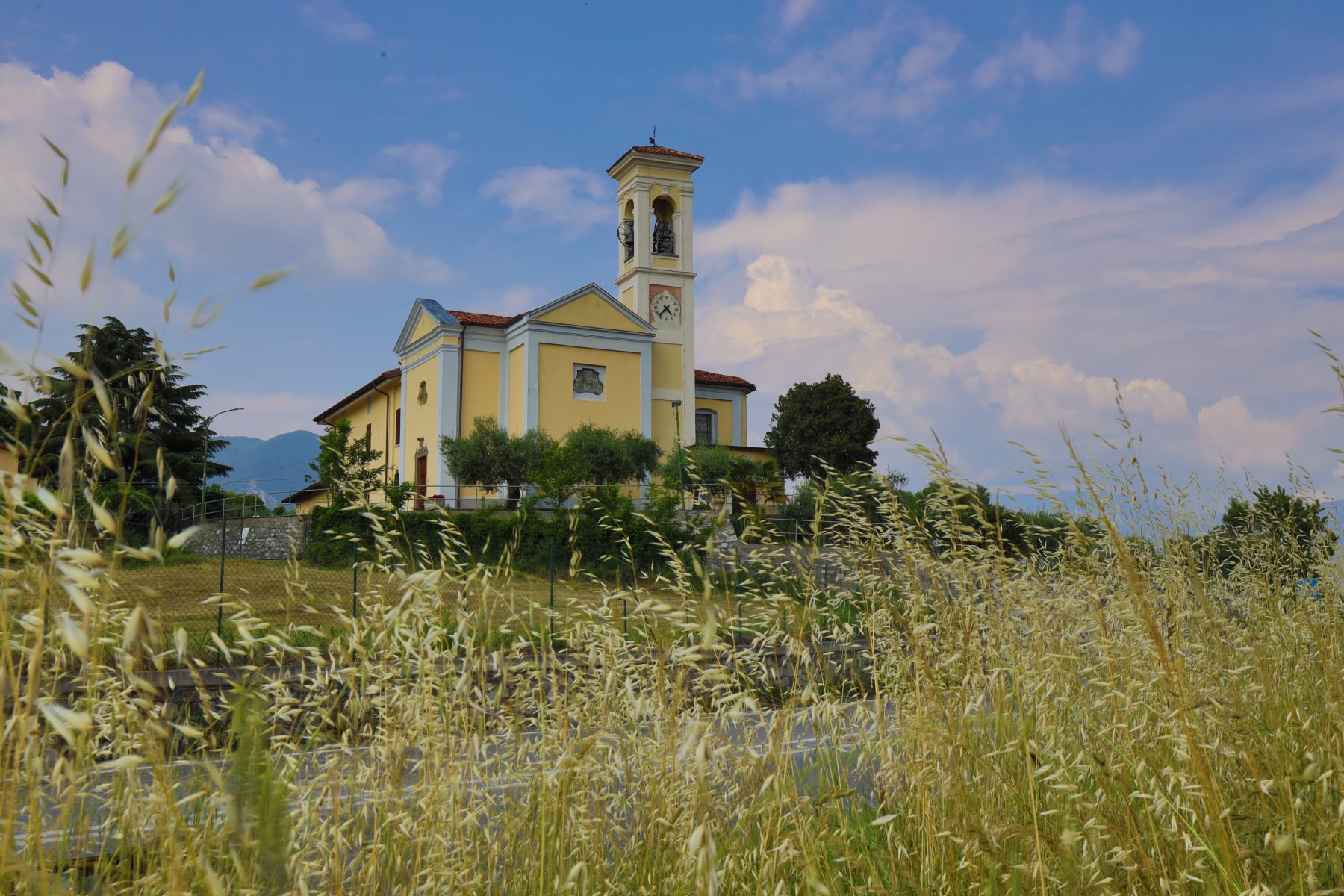
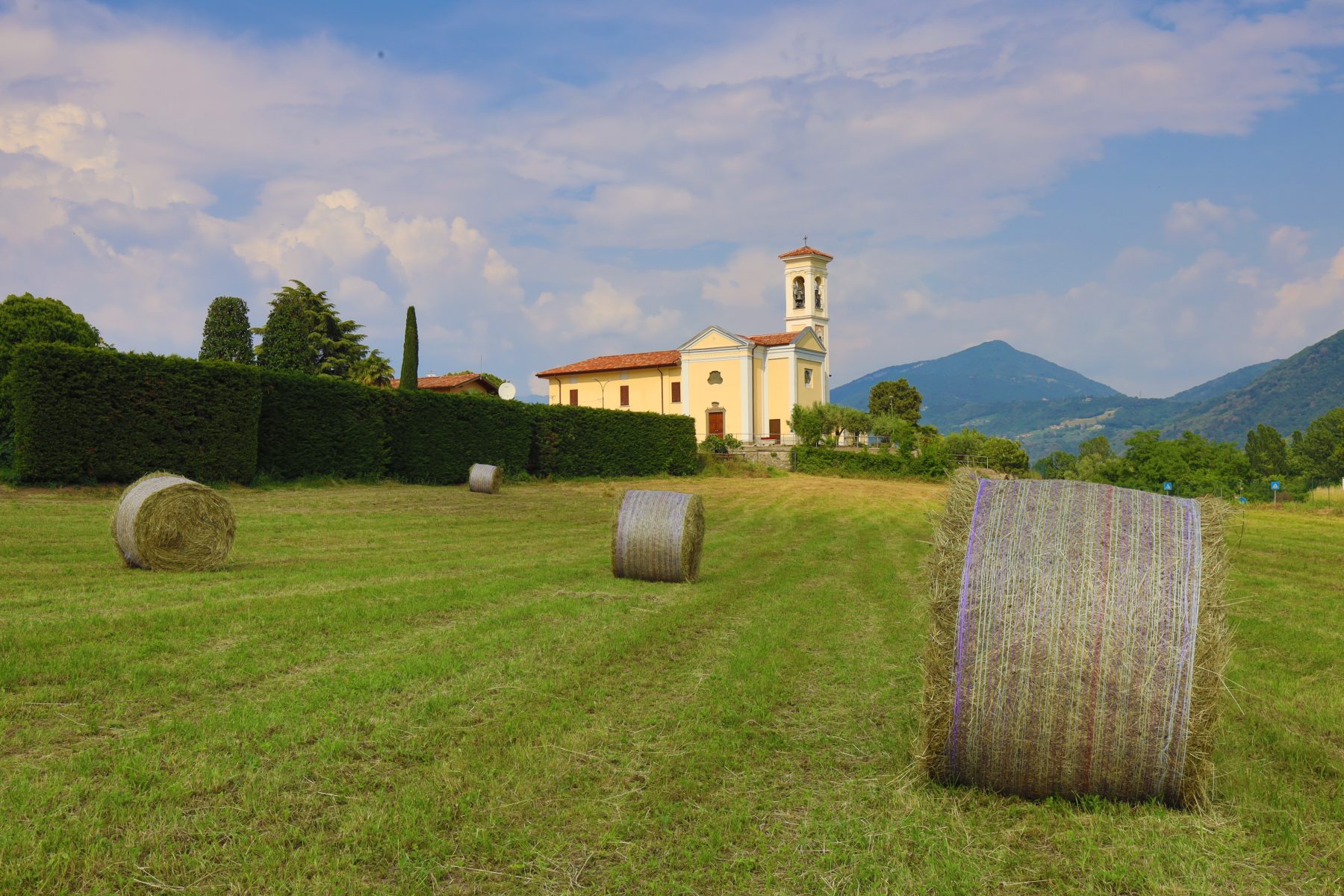
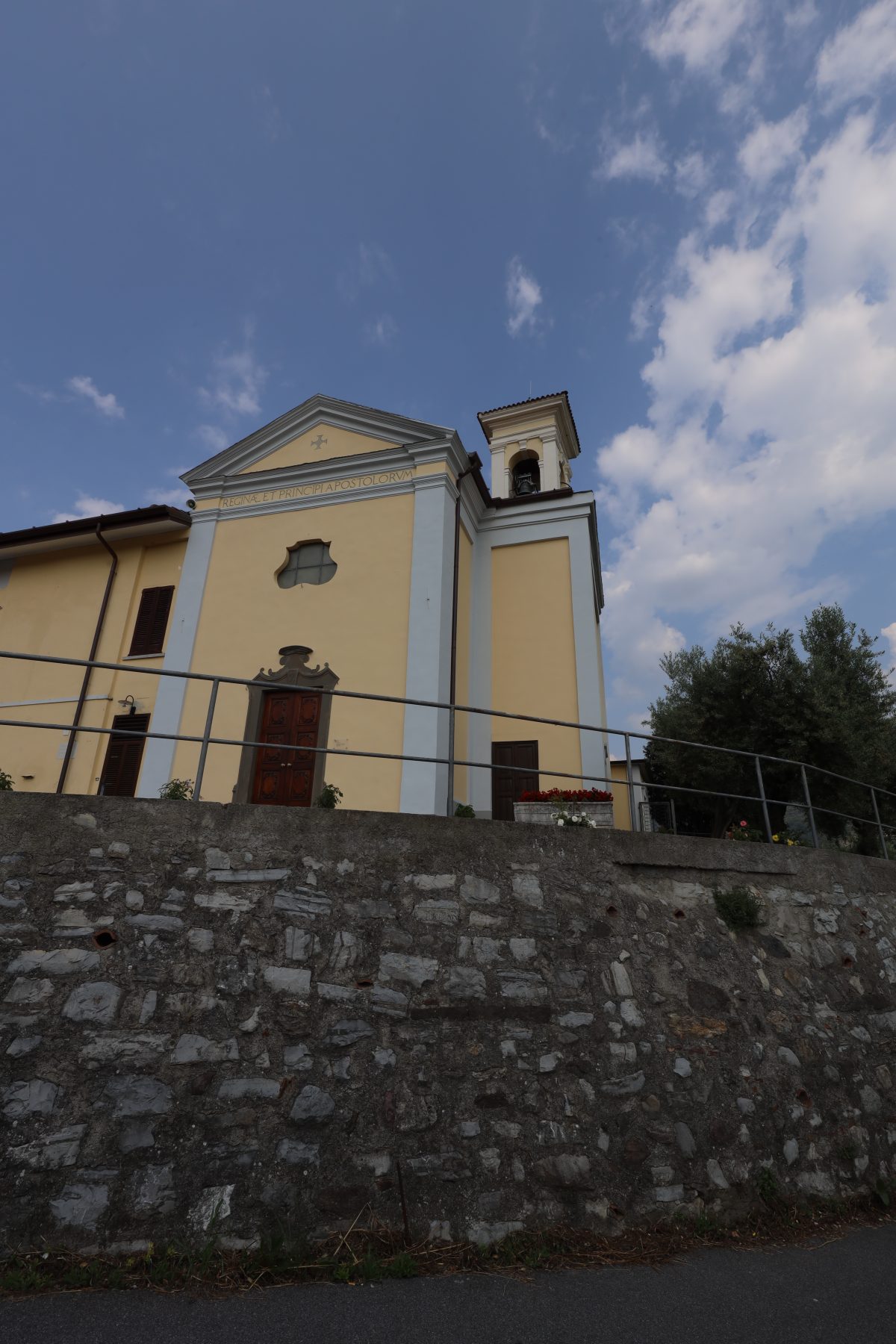
Church of Santi Pietro Apostolo e Giovanni di Dio in Cremignane
Cremignane is a small village of Iseo approximately 3 km from the village, to the south-west. The church stands in an elevated position west of the Sebino bogs, the proximity of which also led to its name of San Pietro della Lama. Originally the seat of a Cluny priory between the 11th and 12th Centuries, a new and larger church building was erected here between the 15th and 16th Centuries. The current structure dates back to 1750.
Preceded by a narrow cobbled churchyard, the church has a plastered gabled façade defined by corner pilar strips; it is crowned by an entablature, inscribed with the words: “Reginae et principi apostolorvm”, supports a projecting gable. Typically 18th Century, due to the mixed shape of the circumferences, are the portal and the shaped frameless window above it. The interior, very bright, has a Greek cross layout with side altars and adornments in plaster and frescoes. The sanctuary, raised and square, is covered by a ribbed vault fully decorated and frescoed, and closes with a flat wall. Next to the church are the sacristy, the rectory and the bell tower.
The most valuable work is the altarpiece of the only altar, the work of Antonio, the eldest son of Francesco Paglia, dated 1729, therefore during the years before the rebuilding of the complex, dominated by pearly, pink and blue chromatic tones. Another precious aspect is the 18th Century marble altar, now moved over to the far wall.
The fresco decoration was started with Saint Andrew the Apostle, John the Baptist, Francis of Assisi, James the Apostle in the corbels of the sanctuary dome and St. Mary of the Assumption in the centre of the same, assigned respectively to the Brescian artists Sante Cattaneo and Giuseppe Teosa, but actually the work of another Brescian, Domenico Voltolini or some of his collaborators. Works continued until towards the end of the 20th Century: at the beginning of the century, with interventions by Pietro Servalli, a painter from Gandino who trained at the Accademia Carrara in Bergamo (The miraculous catch in the vault of the nave), and in 1945, by Pietro Monzio Compagnoni, also from Bergamo.
Fiorella Frisoni













